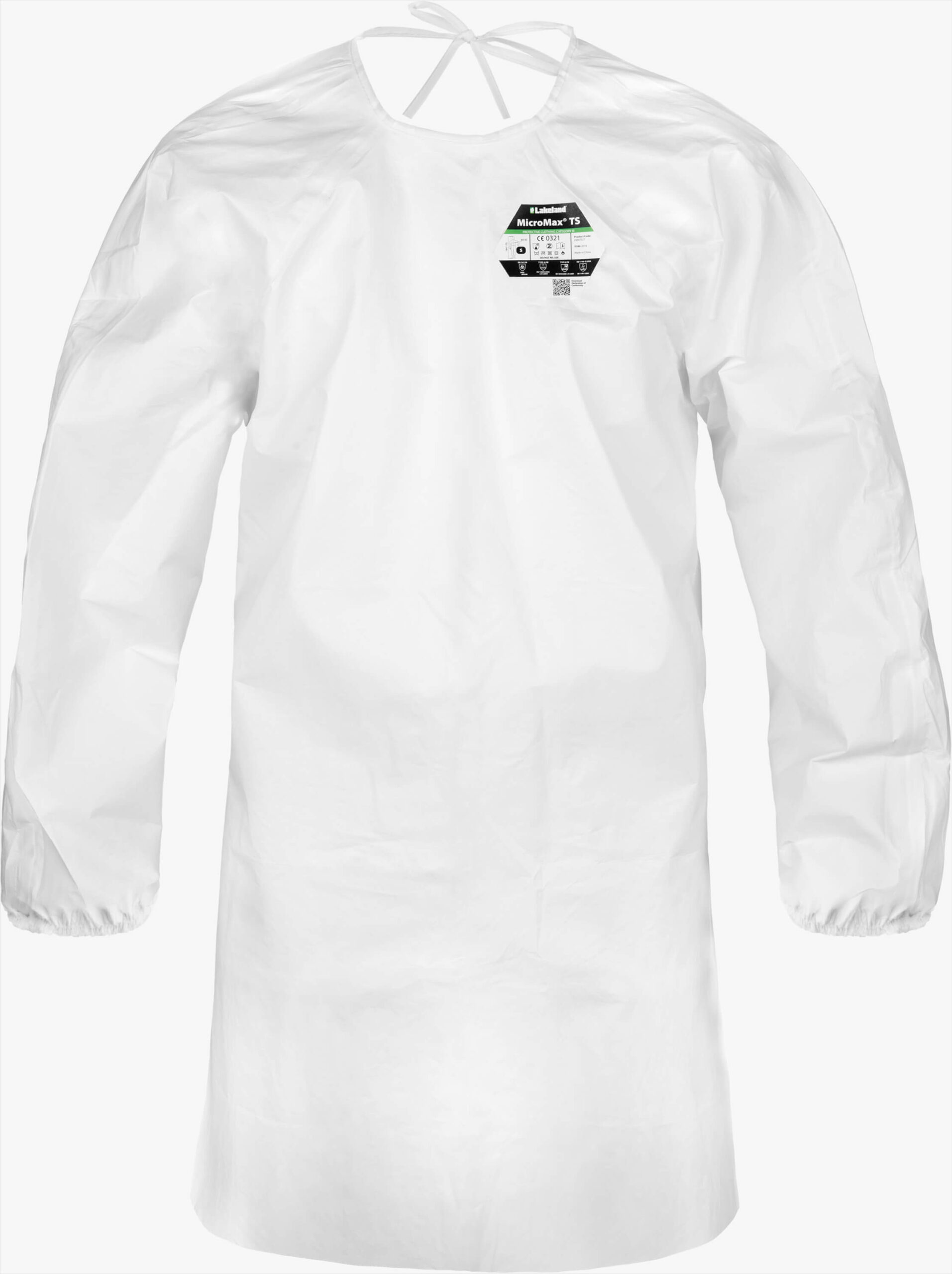MicroMax® TS Rear Entry Gown with Ties
If you’re interested in availability, please speak with a Lakeland product specialist or your local distributor.
MicroMax® TS uses a high quality MicroMax® microporous PE film laminate combined with stitched and taped seams to achieve Type 4 liquid spray protection.The fabric is extremely soft and flexible, and combines effective liquid and particle repellency with a high Moisture Vapour Transmission Rate (MVTR) to maintain comfort for the wearer. The resut is the ideal combination of protection and comfort. Rear entry hospital gown with elastic cuffs and waist ties. Sealable double-sided tape on zip cover. Partial Body EN Type 4[PB] liquid spray protection. Fabric achieves the highest classes in all four tests required by the EN 14126 standard so is also suitable for viral bacterial protection such as contaminated blood and body fluids. Certified to EN 1149-5 for static dissipate clothing.
MicroMax® TS uses a high quality MicroMax® microporous PE film laminate combined with stitched and taped seams to achieve Type 4 liquid spray protection.The fabric is extremely soft and flexible, and combines effective liquid and particle repellency with a high Moisture Vapour Transmission Rate (MVTR) to maintain comfort for the wearer. The resut is the ideal combination of protection and comfort. Rear entry hospital gown with elastic cuffs and waist ties. Sealable double-sided tape on zip cover. Partial Body EN Type 4[PB] liquid spray protection. Fabric achieves the highest classes in all four tests required by the EN 14126 standard so is also suitable for viral bacterial protection such as contaminated blood and body fluids. Certified to EN 1149-5 for static dissipate clothing.
MicroMax® TS uses a high quality MicroMax® microporous PE film laminate combined with stitched and taped seams to achieve Type 4 liquid spray protection.The fabric is extremely soft and flexible, and combines effective liquid and particle repellency with a high Moisture Vapour Transmission Rate (MVTR) to maintain comfort for the wearer. The resut is the ideal combination of protection and comfort. Rear entry hospital gown with elastic cuffs and waist ties. Sealable double-sided tape on zip cover. Partial Body EN Type 4[PB] liquid spray protection. Fabric achieves the highest classes in all four tests required by the EN 14126 standard so is also suitable for viral bacterial protection such as contaminated blood and body fluids. Certified to EN 1149-5 for static dissipate clothing.
Additional information
